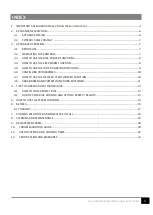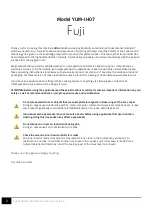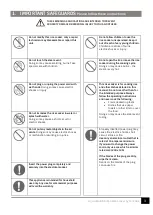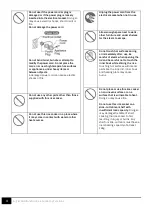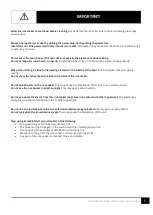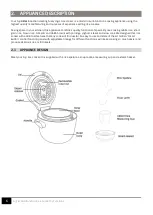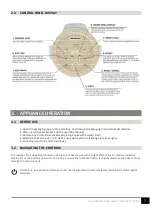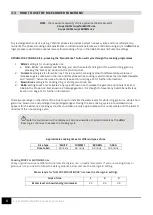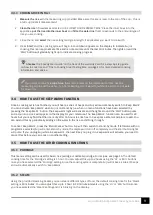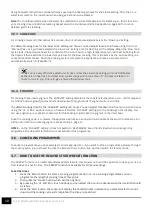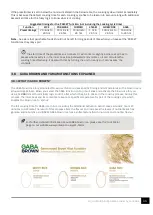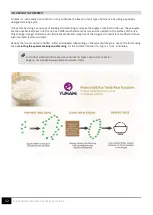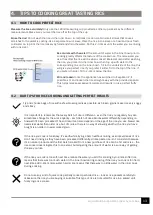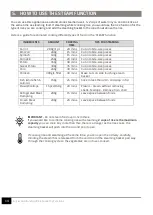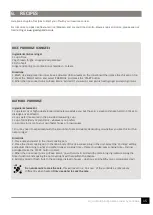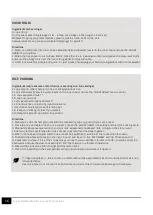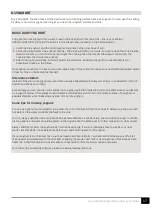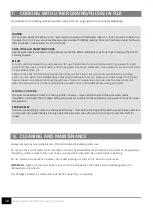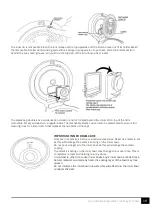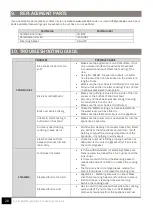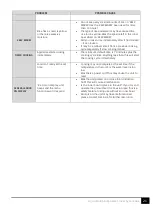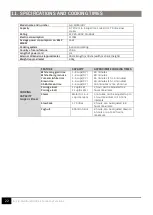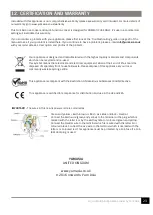
9
Fuji IH Multifunction Rice Cooker by Yum Asia
3.3.1 COOKING RICE IN FUJI
1.
Measure
the rice
with the measuring cup provided. Make sure the rice is level to the top of the cup – this is
a full cup (180ml) measurement.
2.
Clean
the rice
(if needed) as directed in ‘4.1 HOW TO COOK PERFECT RICE’. Place the inner bowl into the
appliance,
put the rice into the inner bowl
and
fill to the water line
that corresponds to the amount/type of
rice you are cooking.
3.
Close the lid and
select
the rice setting (and grain length, if applicable) you want to cook with.
4.
Press
‘Start’
and the cooking cycle will begin.
A countdown appears on the display to indicate Fuji is
cooking, this is an approximate time and is not accurate until the last 10 minutes. The lights around the
‘Start’ button will gradually light up to indicate cooking progress.
3.4 HOW TO USE THE KEEP WARM FUNCTION
Once a cooking cycle has finished, you will hear a series of beeps and Fuji will automatically switch to ‘Keep Warm’.
You can activate ‘Keep Warm’ when Fuji is on stand-by (i.e. when no menu functions have been selected) by
pressing the ‘Keep Warm’ button. The keep warm light will activate and the lights around the ‘Start’ button pulse
and a count-up clock will appear on the display for your reference. The ‘Keep Warm’ function can be used for 24
hours but you may find that the rice is dry after 15 hours (as rice has to be kept at a safe temperature to eat). You
can extend this by periodically adding a little water to the rice and stirring through.
To cancel ‘Keep Warm’, press the ‘Menu/Cancel’ button. Fuji will then switch to stand-by mode. If left alone with no
programme selected, Fuji
will enter stand-by mode; the display will turn off completely and the start button lights
will pulse
. If you unplug Fuji while in keep warm, the next time you plug it in, keep warm will activate, you need to
cancel this before you can cook on another setting.
3.5 HOW TO USE THE OTHER COOKING FUNCTIONS
3.5.1 PORRIDGE
This menu setting can be used for Asian rice porridge or oatmeal porridge. For recipes, see page 15
. The default
cooking time for the ‘Porridge’ setting is 1 hour. You can adjust this
up to 2 hours
using the ‘Hr’ or ‘Min’ buttons
once you have selected the ‘Porridge’ setting. Once the cooking cycle is complete, Fuji will make a series of beeps
and will automatically switch to ‘Keep Warm.
3.5.2 STEAM
Using the provided steaming basket, you can steam different types of food. The default cooking time for the ‘Steam’
setting
is 10 minutes.
You
can adjust this up to 1 hour in 10 minute intervals
using the ‘Hr’ or ‘Min’ buttons once
you have selected the ‘Steam’ setting and it is blinking on the display.
Also see
the ‘Speedy Start Guide’ on the back of the warranty card for a step-by-step guide
on how to cook rice and ‘Tips to Cooking Great Tasting Rice’ on
page 13
for more detailed cooking
information and advice.
If you want to cook
½ a cup of rice
, there isn’t a mark on the inner bowl for this. Use the
measuring cup to add the water – ½ of a measuring cup of water for white rice and 1 cup of water
for brown rice.


